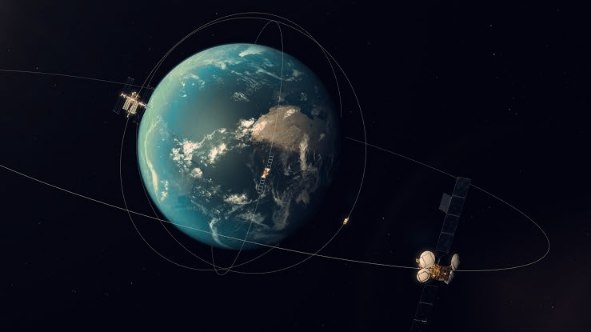Maintaining Orbit: A Balancing Act in Space
Satellite, those marvels of modern technology that orbit Earth, seem to defy gravity. But how do they stay up there? The answer lies in a delicate balance of forces.
The Role of Gravity
Gravity is the primary force acting on a satellite. Earth’s gravity constantly pulls the satellite towards its center, trying to bring it crashing down.
The Counterforce: Orbital Velocity
To counteract gravity, a satellite must possess a specific orbital velocity. This is the speed at which the satellite moves sideways, parallel to Earth’s surface.
- Imagine throwing a ball horizontally. The ball will travel a certain distance before hitting the ground.
- Now, imagine throwing the ball harder. It will travel further.
- If you could throw the ball fast enough, it would travel so far that the Earth curves away beneath it. The ball would essentially be “falling” around the Earth, never actually hitting the ground.
This is the principle behind orbital velocity. The satellite is constantly “falling” towards Earth, but its sideways motion ensures it never actually reaches the ground.
Achieving the Right Velocity
- Launch Vehicles: Rockets are used to launch satellites into orbit. These powerful vehicles provide the initial thrust to accelerate the satellite to the necessary orbital velocity.
- Precise Calculations: Scientists carefully calculate the required orbital velocity based on the desired altitude and the specific characteristics of the satellite.
Types of Orbits
- Low Earth Orbit (LEO): Relatively close to Earth, typically between 200 and 2,000 kilometers. Many satellites, including those used for Earth observation and the International Space Station, reside in LEO.
- Geostationary Orbit (GEO): Located much further out, at an altitude of approximately 36,000 kilometers. Satellites in GEO appear stationary in the sky as they orbit Earth at the same rate as Earth rotates. This is ideal for communication satellites.
- Other Orbits: There are various other types of orbits, such as polar orbits, sun-synchronous orbits, and elliptical orbits, each serving specific purposes.
Maintaining Orbital Stability
While the initial velocity establishes the orbit, factors like atmospheric drag (especially in LEO), gravitational perturbations from the Moon and Sun, and even solar radiation can slightly alter a satellite’s trajectory over time.
- Station-keeping Maneuvers: To maintain the desired orbit, satellites occasionally perform small adjustments using onboard thrusters. These maneuvers counteract the effects of these disturbances and ensure the satellite remains in its intended position.
In Conclusion
Maintaining a satellite in orbit is a continuous balancing act. By carefully controlling its velocity and making necessary adjustments, scientists and engineers ensure these technological marvels continue to provide valuable services, from weather forecasting to global communication.
